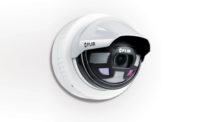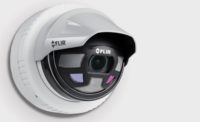Outdoor and perimeter detection, an increasingly essential line of defense since the tragedies of September 11, means even facilities that were traditionally heavily laden with security systems have stepped up a notch.
There are various product and technology approaches, according to outdoor and perimeter protection system manufacturer Senstar-Stellar of Fremont, Calif.
Outdoor security sensors detect intruders as soon as they enter a protected area and before they can gain access to people or valuable assets. Outdoor sensors can be used either to complement indoor security sensors or as primary security in situations where indoor security is not feasible. Outdoor sensors face unique challenges: temperature extremes, rain, snow, animals, blowing debris, seismic effects, terrain and traffic, just to name a few.
Covert Approaches
What security experts call “vulnerability to defeat” characteristics of different sensors are important to consider. Covert sensors obviously make them difficult to avoid and less subject to vandalism. Some perimeter product systems provide an imposing appearance for a deterrent effect. Volumetric sensors create a large invisible detection field that makes bridging difficult.For example, Senstar-Stellar’s Intelli-Flex line is a microphonic intrusion detection system for outdoor, fence-mounted applications. By analyzing signals generated by the minute flexing of a proprietary triboelectric coaxial sensor cable, Intelli-Flex detects an intruder cutting through, climbing on or lifting the fence fabric.
There are other approaches. Check elsewhere in this article for a thumbnail description of each type of typical outdoor sensor approach.
There is also a strong integrated systems approach to outdoor perimeter protection.
For instance, Senstar-Stellar markets StarLED 200, a solid-state infrared LED illuminator that creates light which, while invisible to the naked eye, is visible to standard infrared sensitive security video cameras.
So, with or without such illuminators, video security cameras can play an important role in outdoor security. For one thing, video can verify whether or not alarms reported by intrusion detection sensors are valid intrusions.
Outdoor protection products have come a long way.
More Effective
Reliability was a potential stumbling block for the use of outdoor protection in the past, says Ephraim Rein of Crow Electronic Engineering, Fort Lee, N.J. “Previously, one of the biggest problems with outdoor technology was false alarms,” he says. Now, there are a number of approaches and products that diminish the problem. One: triple technology, combining microwave and dual-technology passive infrared. Since September 11, users are looking for more sophisticated types of security, with cost sometimes taking a back seat to proven reliability, Rein says.Patrick O’Brien, Security Resources in Honolulu, says unique new installation applications have emerged, and facilities with minimal coverage have bolstered their existing security as well. Some of these applications are obvious: government and military facilities as well as infrastructure utilities. “We’re working with the military and the Navy to protect bases, naval areas and shipyards. In addition, we’re protecting key access points at water pumping stations, and protecting against biochemical hazards, as well,” he says.
Security Resources at times takes a multi-product approach to outdoor and perimeter protection, beyond the typical or traditional perimeter sensors..
He uses outdoor motion sensors, card access and other security integrated with alarm and video monitoring. Smart cards and fingerprint and facial recognition, which he says have dropped in price, are seen more frequently now. “Technology has become more cost-effective and we’re doing a lot more remote monitoring. This keeps users in touch with facilities that may be located a distance away. Wireless transmission and communications are also emerging more often for high-end outdoor perimeter applications,” O’Brien says.
Systems integrator Ener-Tel, San Angelo, Tex., has several high-profile jobs including protection of a municipal water-treatment facility and security for a local river authority organization. According to Ener-Tel’s Jon Allen Richardson, many applications have surfaced that focus on a facility’s perimeter. “We use fence detectors and outdoor microwave-dual technology sensors and pan-tilt-zoom cameras, often coupled with a connection to a remote network for surveillance or supervision.”
Keeping People Out
In many applications, users focus on keeping unwanted intruders from gaining access to specific areas within a facility as much as alerting to intruders, says Larry Thomas of Protection Technologies Inc., Reno, Nev. This is especially true of infrastructure. “There’s definitely a much greater awareness of security, especially for water-treatment plants, utilities, railroad hubs and bridges.”Thomas says that the nature of the facility and how much the user has to spend will often dictate the security that’s deployed. “The end user is trying to secure the outdoor perimeter of a facility and do it the best way they can because it is the first line of defense. When you specify detection outdoors, reliable protection can be costly, so some may opt to target key vulnerable areas only, such as chemical storage tanks, for example.”
Not only are microwave, dual-technology and other sensors in the perimeter protection spotlight, but there’s renewed activity and interest in fiber optic intrusion systems, especially as some perimeter fencing systems require upgrading as well as fiber optics as a better way to send security data.
At CompuDyne Corp.’s Fiber SenSys Div. in Beaverton, Ore., Martin Roenigk firmly believes that “until we can solve perimeter fencing and access problems, nuclear plants, refineries, reservoirs, chemical plants and even our airports are still open to security breaches.” Interestingly, a CompuDyne subsidiary and installing company, Quanta Systems Inc., Gaithersburg, Md., is working on the installation of a fiber optic shoreline intrusion detection system along the Atlantic coastline. The system uses a marine-based radar system integrated with thermal imaging cameras and custom software to detect and display intrusion attempts originating from the water, allowing security personnel to track movement on the water and take appropriate action prior to the threat reaching land.
Detection and Communication
According to Duane Thompson of Fiber SenSys, the company’s fiber optic alarm sensor cabling system is useful for perimeters such as pipelines and also to monitor the structural integrity of a building, for example. Another product: fiber optic cabling “co-located” with secured communications lines to prevent tampering and access to potentially sensitive data and information.At the recent Americas’ Security Expo in Miami, IFS International Fiber Systems of Newtown, Conn., showed off its Orion Fiber Optic Communication System which can continuously receive up to 11,000 video signals or view up to 128 real-time video channels at any time. The system can also handle data and audio communication. The system boasts photo quality MPEG2 and 19-mile coverage that can cover a good chunk of perimeter.
IFS technology underlines the growing importance of video surveillance outdoors.
A spokesperson at Ademco Video, Syosset, N.Y., agrees. He says, “Technology has done wonders for outdoor CCTV. Many cameras feature extremely low light sensitivity and infrared technologies that allow monitoring in environments once considered extremely difficult or nearly impossible. Premises monitoring can include parking lots, fences, or the grounds of a facility where you want to observe movement patterns or activity such as theft or vandalism, and even potential terrorist attacks.”
Because of September 11 and the new emphasis on homeland security, it’s obvious that there is some appeal to more perimeter protection. Jeanne McGuire of Perimeter Products Inc., Fremont, Calif., however, feels “it’s probably too early to see a lot of increased activity. Once people have completed their risk assessments and determine how much they have to spend, we’ll see more emphasis on perimeter security,” she says. “We know that certainly there is increased activity from those entities that really had little or no interest in exterior detection systems before,” she says.
Solar-powered Units, Too
Adds Bob Houston of Aressco Technologies Inc., Homestead, Fla. “Nuclear power plants, dams, water-treatment plants and reservoirs, airports, seaports, cargo terminals, areas monitored by the U.S. Border Patrol, embassies, government buildings, military installations prisons and other sites that require heavy security may now have a better opportunity against breaches of their perimeters and other protected areas,” he says. The company’s wireless, solar-powered perimeter security system has been installed at a Federal Reserve banking facility, electric distribution plants, airports and other locations.SIDEBAR: Outdoor Sensors
Look at sensors in four groups, according to Senstar-Stellar of Fremont, Calif.Volumetric Sensors
Generate an invisible detection field to locate intruders. Field of detection is invisible, so it’s very difficult to evade. Immune to most environmental conditions; often used in sterile zones; and may be totally covert.
Fence-Mounted Sensors
Are above ground detection sensors attach to an existing fence or wall. Detection when intruder disturbs detection field or when vibration due to cutting or climbing.
Video Motion Detection Sensors
Analyzes video output signal to create the detection field. Video also provides additional information to help identify the source of an alarm and whether or not it is valid.
Barrier Sensors
A two-in-one security option: a barrier to intrusion and a sensor system for detection. Taut-wire sensors are an example of a barrier sensor. An almost zero false alarm rate; virtually no environmental limitations.


